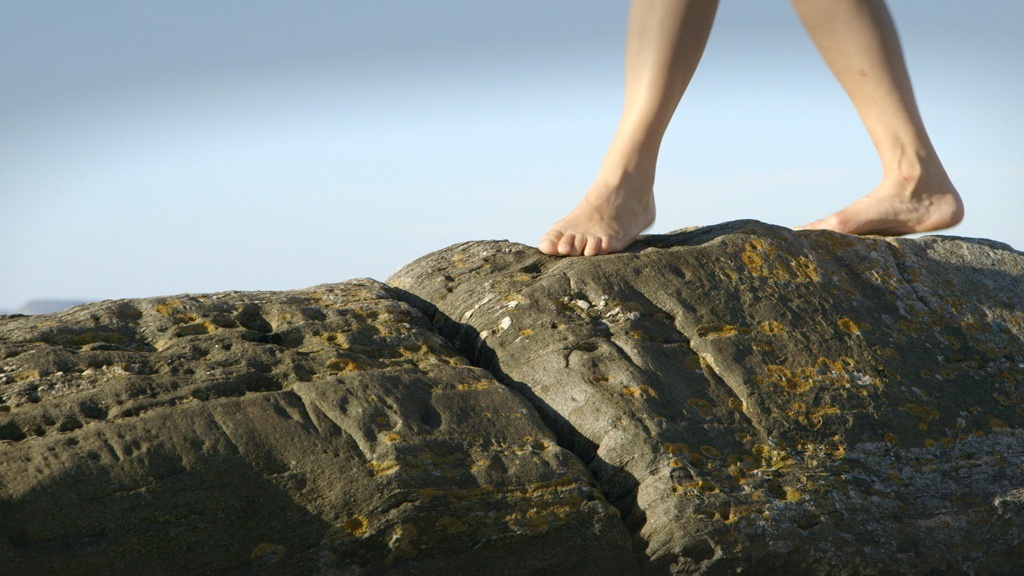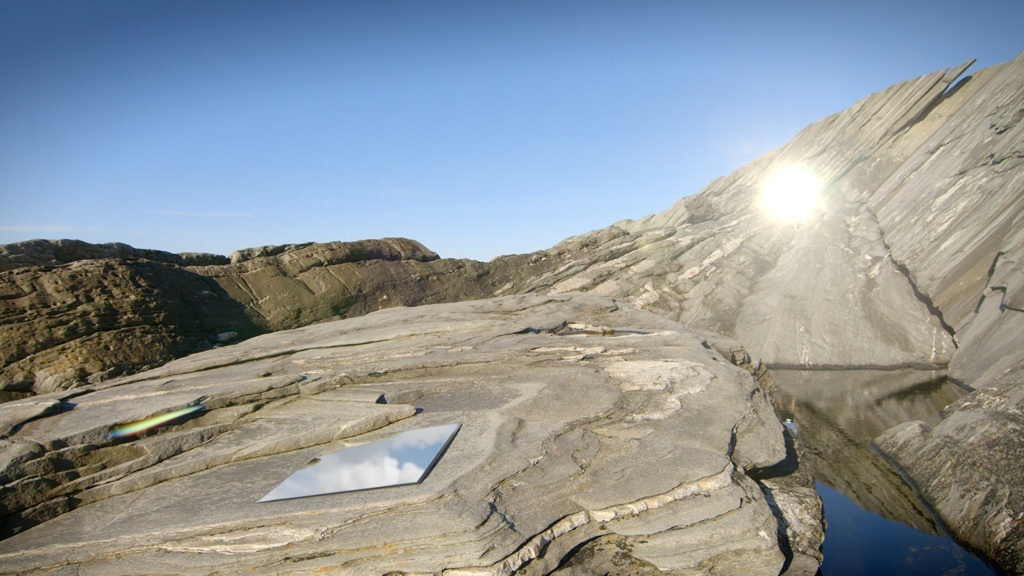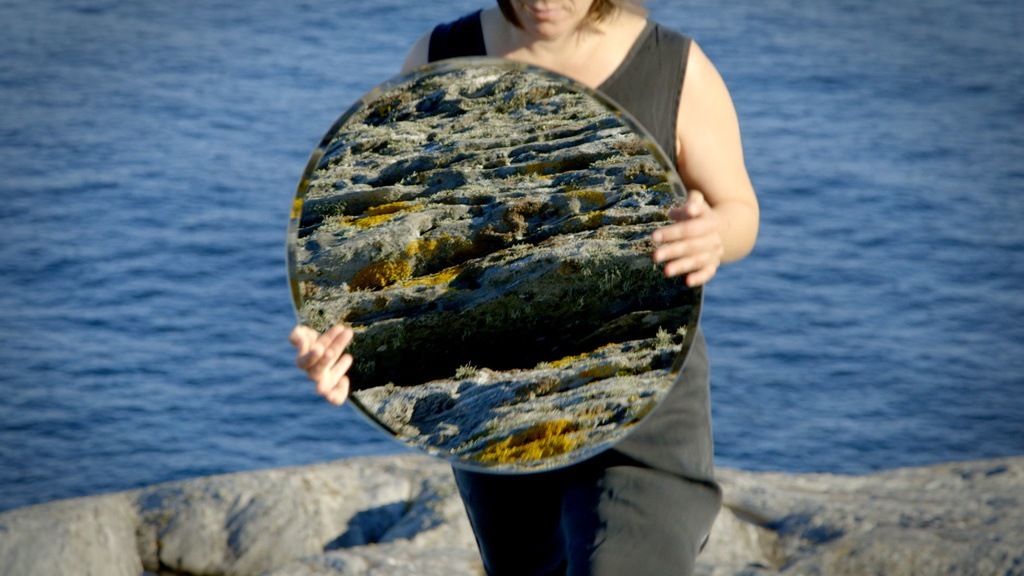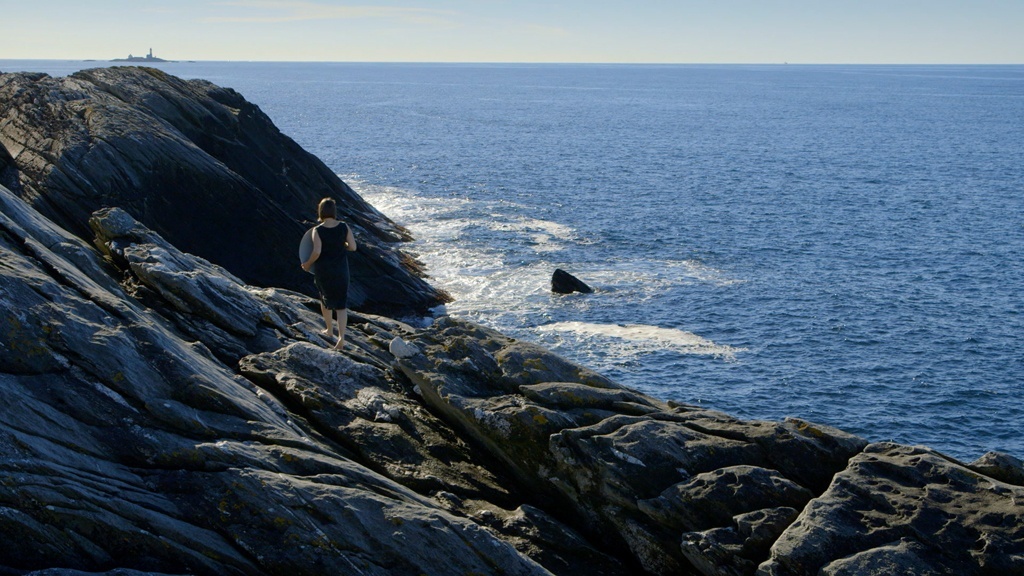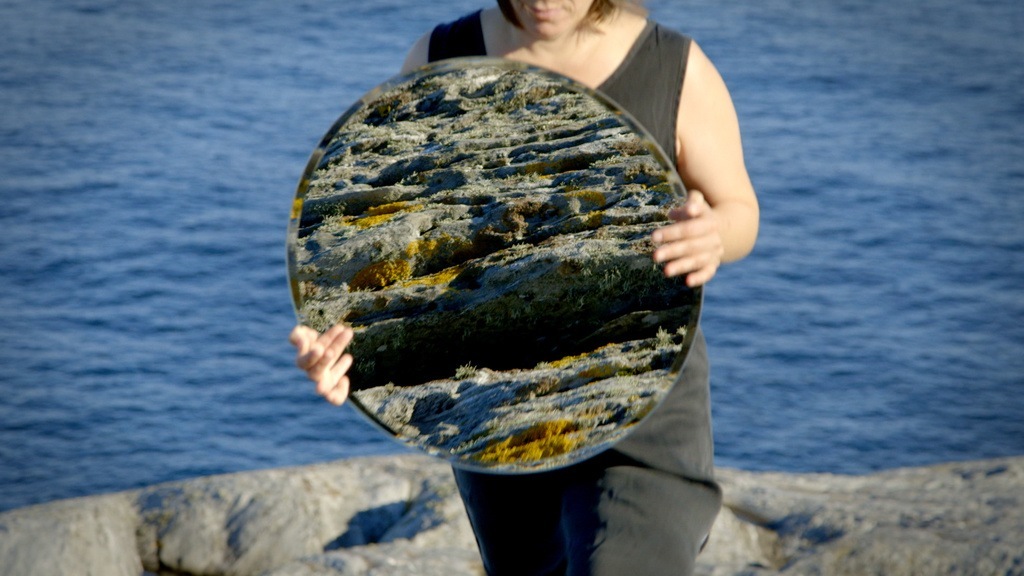Heather Jones: Hi Tove! How are you?
Tove Kommedal: I’m fine. Good afternoon, good morning to you! What a nice place you have. There’s a tree in the back and everything.
HJ: Yes, for Brooklyn it’s pretty nice! Thanks so much for taking the time to meet with me today. I wanted to talk to you more about this video, Untitled, currently on view at The 4th Taiwan International Video Art Exhibition at the Hong-Gah Museum in Tapei. How did you become connected with the curators of this exhibition in Taiwan and what were their selection criteria?
TK: Yes. It was actually an open call, and I think the title of the biennial was the concept, the theme. Of course it’s a video art exhibition. And the title for it was The Return of Ghosts and in this movie I’m kind of trying to go into a different state.
HJ: Like a trance?
TK: Yes but I’m not showing the trance. That’s what I think is interesting. I’m not showing it. I’m just showing a person who wants to do something that is not possible to do, because you can’t actually jump into a mirror. But the mirror actually opens up for another space that is nearby. But at the moment I’m not that interested in trying to describe, for example, the other side of the mirror, because within myself I have this problem with the things that you can’t explain. So then why? I think art can show things from that space. But I’m more interested in showing the portals to this place.
HJ: That’s the word that I just wrote down to ask you about. Portals. So in this video, you’re wandering around in a natural, rocky landscape by the sea and you’re carrying with you a large circular mirror, which is reflecting the sky and the landscape around you. But then at one point, you lay the mirror down flat on the bolder. I remember when I first saw this scene I immediately though of a portal, or a … well coming from New York, I think of an uncovered manhole that a person can jump or fall into. In the video, are you trying to find this portal?
TK: Yeah! First it’s about walking around trying to find the portal but it’s something about the way that the character is walking… she also knows where the portal is, in a way. You can sense that she knows where to walk. She has a strong sense of direction. But she also passes a portal that she doesn’t see in the first and second scenes. So maybe there are portals all over the place… but you don’t always see them. This person is definitely going towards one that she knows is there. She is walking on a specific path. She doesn’t look around her in the second scene where there is one that she doesn’t see. But we as viewers, we can see it there.
HJ: This is a perfect segue because I also want to ask you about how you as the artist are thinking about the viewer in this video. What are you trying to reveal?
TK: I think you ask that question because the person is showing not herself in the mirror, but something else. Usually when we go to a mirror, we go there to look at ourselves. But the person in this video shows the viewer what she is looking at. And at one point there becomes a hole in the person because the reflected sky merges with the sky behind her… So there are different layers there.
HJ: So when you talk about how this character in the video is showing these other worlds to the viewer, in my mind then as the artist, I think that you must be very aware of the people that will be watching this video. Where to some artists the viewer is either absent or an afterthought – they’re recording themselves or they’re recording a performance – this video feels very much like it is made intentionally for people to watch.
TK: Yes, this is true of everything I do. I want to tell something, you know? And so many times I don’t even know what it is that I want to tell because this is a kind of vision. And also, what I’ve been dealing with the last 4-5 years, it’s a contrast between lightness and heaviness. It’s a kind of polarity. It’s not possible to force them together and if you do manage to do that, to force them together, they will slip and pull away. They will never stay together. I wanted to try to put lightness into heaviness. You know? The sky is light and the ground and the earth and especially this rocky landscape is so heavy, there is no space inside. So I would like to try to smash it in there, without going inside myself.
In the back of my head, I’m playing around with the idea of people who are psychotic. For example, I think that if things that you are dealing with are so heavy, you can’t manage them, then you try to escape; the psyche tries to escape that kind of situation. But I didn’t want to go inside to find what’s in there. So that’s why the focus is a portal, rather than attempting to define what’s on the other side. It’s about developmental stages in a way. That’s why I’m using the mirror as well.
HJ: Right. On the first hand, it seemed like the mirror was simply a portal, but now hearing you speak about it, it also seems like a tool. Not just an entry but a tool that can essentially summon the sky down into the rock or vice versa.
TK: But it’s also a reflection … in hindsight, it’s also a little bit about narcissism, and narcissist history, because Narcissus is going to his mirror all the time. He eventually falls down into it. But it’s not a mirror in the original myth. It’s water. The way that this mirror is laying, it’s kind of the same you know. It’s a reflective surface, and we go to a mirror to see how we look – to see ourselves. So this person is in a way jumping into herself.
HJ: Let’s talk about reflectivity in your work in general. This work is very obviously using a reflective surface to show the viewers themselves in some way. Last time we met in your studio, that idea was really present in a lot of your work. Not the mirror as a form, but these socially, satirically challenging pieces that reflect society back on itself. I’m thinking specifically of the ‘eating crow’ project where you really challenged people’s predetermined notions of what you can and can’t eat and you created a play on the idiom ‘eating crow’. You’ve created a number of these kinds of socially revelatory projects. I was wondering if you could talk about that a little bit.
TK: I think that art has a special capacity in society, if you understand. Because yes, it could be a portal into many different things. It’s like imagination. You can’t hold it but you just have to show pieces of it and then it becomes a private thing for the viewer, how he/she want to approach it.
HJ: So do you think if you look at something… ha! This is a very leading question. Do you think when you look at something too directly and you try to define it too specifically, it often loses its power?
TK: Yes of course. So for the project with the crows, I needed almost five years to work on that because the crow was in the way! There was too much draw from it. So what am I going to show at the end now? There’s almost no crow left. It’s evolved.
HJ: This might be a basic question but just to cover it, in a lot of your past project we were just talking about, there was a lot of social engagement, social activity. And in this video, it’s very singular. There’s just one person. And it’s also very environmental. Is there any kind of environmentalist push behind this work?
TK: The place where this film in shot is a spot that I’ve gone to quite a lot for many years. And the way that this person is walking in the video… when I go there, I have this compulsion; I always have to go that way. Whenever I’m there, I walk that way… and also to walk there barefoot, it’s very magical because sometimes, for me, sometimes when I walk there the ground feels like it yields under my feet. The ground is moving the feet forward. I have to lean down and check. ‘Is it really that soft? Ok no no, it’s hard.” The feeling of walking there for me is like that.
HJ: Like the ground is leading you in a certain direction?
TK: Not quite. When I was child, I was always sitting and touching the tip of the finger of my grandmother. And when it went down, it didn’t bounce back up as fast as it does on a younger person. And it’s exactly the same feeling to walk on this rock because I believe it feels like the ground is moving under my feet. Like cushioning me in a way and I have to go down and touch it. It’s an extremely magical place for me.
And it’s also because of the ending scene on the stone there with all those layers, with the rocks behind. You can also see these small holes in the rock and in there used to be some other structure of calcium, which has been washed out, dissolved after the last ice age. And the sand that left from this process is Skagen in Denmark. HA! So this is a place in Norway where you have an incredibly open view.
HJ: I’m really interested to hear you talk about magic, and how you think about magic in your work. Again, the last time we met in your studio, you had a book on La Loba, and you’ve been researching mythologies around crows, different recipes, etc. So your work seems to have this very magical/mystical side, but then you balance that with very rational expressions. You have printed graphs and pamphlets and didactic materials. How do you balance those two sides of your work? And is it important to have both?
TK: Yes, for me it’s extremely important to have both. But I’ve always been very scared of ‘the other side.’ And I always think of it as place that’s real. But now, especially after having a child, you can’t go there. We have to find magic within the places where we are. And it’s also because… now I’m going a bit too far maybe…
HJ: No not at all!
TK: It’s also about religion in a way because you can’t prove God. And then we have to find some place to talk about things that we can’t define. I just like to show, to lift up some ideas and then it’s up to the viewer.
HJ: Do you think then that religion and art function similarly? To allow for a space to think about the things that we can’t explain and can’t understand?
TK: Yes. Absolutely. Also like if a person is having a psychotic episode. You can’t … How do you explain it? What is reality? It’s totally real to the person who is experiencing it. It’s arrogant to define what is real and what is not. I think it’s extremely arrogant to say that God exists. I find it so arrogant.
HJ: Do you think it’s equally as arrogant to say that God doesn’t exist, definitively?
TK: It’s the same! But something exists. But more than that, I can’t go on, intellectually. That’s why I think that art has such power, more than just providing entertainment.
My son was came home once and said he believed in Jehovah, because somebody told him. And I said ok so let’s talk about this and he said “do you know mother, do you know, he really made the whole world! It’s true.” So I said, “Okay so let’s go and look into this.” And they’re NOT permitted magic at all. So then we had this conversation, what is magic, you know? It’s like a water drop coming from the sky and then it ends up eventually as a small bit of honey on our table and then we eat it. Wow that’s fantastic!
HJ: I love this aspect of your work. I’m also curious about how this video was received in Taiwan, in a totally different cultural context. You went there to Taiwan for the exhibition, correct?
TK: As I said, the title of the exhibition there was The Return of the Ghosts. And there in Taiwan, they believe in ghosts.
HJ: Culturally speaking you mean? You mean ghosts like spirits or metaphorical ghosts?
TK: Yes. Spirits. They told me in the video when the character was walking with this mirror and then jumped into the mirror the were like “Wow!” I was also invited to talk about my work. I only want to talk about things that are possible to talk about. So, I’m not going in to discuss whether there is a ghost or not. And when they showed the film in Taiwan, I told them that in the beginning, when I showed the film to people, I had had to tell them that I wasn’t actually jumping into the mirror.
HJ: Wait, you mean viewers actually thought you had jumped into the mirror?
TK: No, I have to say that.
HJ: You mean for yourself, as a protection.
TK: Yes, to assure myself that I didn’t really jump in. It’s a trick. It’s just a trick.
HJ: Did you get to see all of the videos in the exhibition? I’m curious about how yours relates to the other video works that were shown.
TK: You know there were 30! My video was actually shown on a monitor quite small, and I was bit affronted. ‘It’s not shown big?!”
HJ: Because the video is normally projected, correct?
TK: Exactly. But the exhibition as a whole was so well curated. The room where my video is showing has three screens embedded in the wall with headphones for visitors. It was actually the best for the work because you could get a bit distracted by the other videos nearby. So in the end I was really pleased with the way that they showed it. I realized that this created a more close-up, intimate experience. And it was shown in a loop.
HJ: This is the only video of yours that I’ve seen. Have you made others?
TK: This is my third. The first one was just an element that I used in an installation. And the second one was supposed to be used in the same way but actually became a work of it’s own. So, I’ve just shown that in Bilbao in a group exhibition and it’s newer being shown in Norway. And it’s quite simple. It doesn’t have a storyboard.
HJ: So then how long is the show in Taiwan on view?
TK: Until the 25th of January.
HJ: Then what’s next for you? Can you tell us?
TK: I’m going to be in a show in Copenhagen in April. And then I’m working on this exhibition for Hå Gamle Prestegard. I’m going to finish off that exhibition for the 5th of September. And then we will see!
Tove Kommedal lives and works in Stavanger, Norway. Kommedal works in a variety of media, suited to each project. Her work has a socio-political underpinning and are often relational in tone. The main trajectory of her artistic practice is research based and experiments with the social potential of art, whether on a material or conceptual level. During the past few years Kommedal has developed a significant practice and has taken part in several important exhibitions such as the annual Vestlandsutstillingen, where she also made her debut, and at institutions such as Stavanger Art Museum, Kunsthall Stavanger, Rogaland Art Center and Stavanger Maritime Museum.
To find out more about Kommedal’s work and upcoming projects, visit her website, here.
